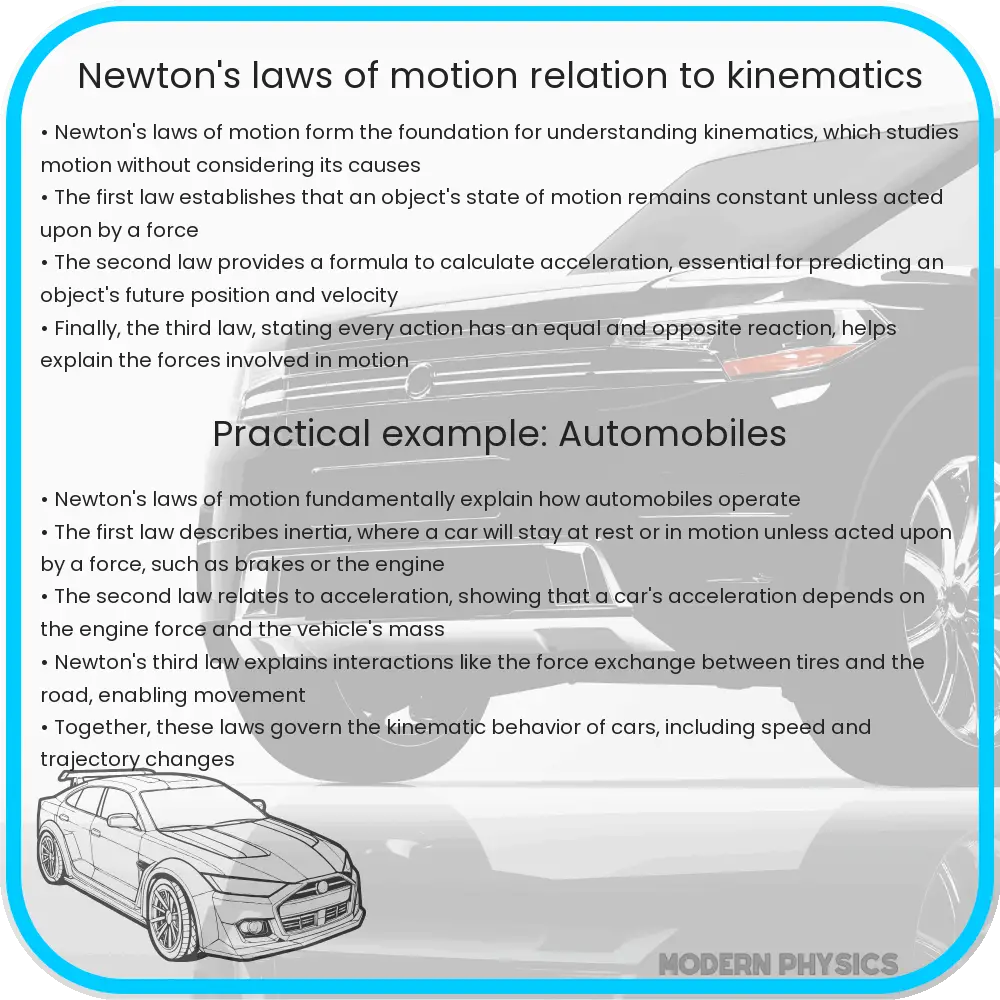Explore the core principles of Newton’s Laws of Motion, their link to kinematics, and diverse applications in engineering, sports, and space.

Understanding Newton’s Laws of Motion: Foundations and Applications
Isaac Newton’s Laws of Motion, formulated in the 17th century, are fundamental to our understanding of physics. These laws lay the groundwork for classical mechanics, explaining the relationship between a body and the forces acting upon it, and its motion in response to those forces.
Newton’s First Law of Motion: The Law of Inertia
The first law, often referred to as the Law of Inertia, states that an object at rest will stay at rest, and an object in motion will stay in motion with the same speed and in the same direction unless acted upon by an unbalanced force. This principle introduces the concept of inertia—the resistance of any physical object to any change in its velocity, including changes to its speed or direction.
Newton’s Second Law of Motion: Force and Acceleration
The second law provides a quantitative description of the changes that a force can produce on the motion of a body. It states that the force acting on an object is equal to the mass of that object times its acceleration (F = ma). This law explains how the velocity of an object changes when it is subjected to an external force.
Newton’s Third Law of Motion: Action and Reaction
The third law asserts that for every action, there is an equal and opposite reaction. This means that for every force exerted by an object, there is a force of equal magnitude but opposite direction exerted back on the first object. This law is a fundamental principle of interactions, demonstrating how forces work in pairs.
Linking Kinematics and Newton’s Laws
Kinematics, the branch of mechanics that describes the motion of objects, is deeply intertwined with Newton’s Laws. These laws provide the basis for understanding the causes of motion, while kinematics focuses on describing motion itself. For example, using kinematics, we can calculate an object’s velocity, acceleration, or trajectory, while Newton’s Laws help us understand the forces causing these motions.
Together, Newton’s Laws and kinematics form a comprehensive framework that is crucial in various fields, from engineering to astronomy. They are essential in analyzing the motion of objects ranging from microscopic particles to massive celestial bodies, making them invaluable in both theoretical and applied physics.
Practical Applications of Newton’s Laws of Motion
Newton’s Laws of Motion have a wide range of practical applications in everyday life and advanced scientific fields. These laws are used to design vehicles and structures, understand natural phenomena, and even explore the cosmos.
Application in Engineering and Technology
In engineering, Newton’s Laws are fundamental. For instance, when designing vehicles such as cars and airplanes, engineers use these laws to calculate forces, acceleration, and motion. The first law aids in understanding the behavior of a vehicle at rest or in uniform motion, while the second law is used to determine the necessary force to achieve a desired acceleration. The third law helps engineers understand the reaction forces, like the thrust produced by a jet engine pushing the aircraft forward while expelling exhaust backward.
Role in Sports and Human Motion
Newton’s Laws also play a crucial role in sports science and human motion. Athletes and coaches use principles derived from these laws to optimize performance. For example, understanding the relationship between force and acceleration (second law) can help in improving the efficiency of a sprinter’s start, or a swimmer’s push off the wall.
Impact on Space Exploration and Astronomy
In space exploration and astronomy, these laws are invaluable. The motion of planets, comets, and artificial satellites are all analyzed using Newton’s Laws. Rockets are launched and maneuvered in space following the principles of action and reaction (third law), with the engines exerting force in one direction and propelling the spacecraft in the opposite direction.
Conclusion: The Enduring Legacy of Newton’s Laws
In conclusion, Isaac Newton’s Laws of Motion are not just historical scientific achievements but are active, vital principles that continue to shape our world. From the way we design vehicles to understanding the vastness of space, these laws provide a fundamental framework. Their application extends beyond pure physics, influencing various domains such as engineering, sports, and space exploration. Newton’s Laws of Motion, by explaining the most basic interactions of forces and motion, have become an indispensable part of modern science, reflecting the remarkable legacy of Newton’s insights into the natural world.
